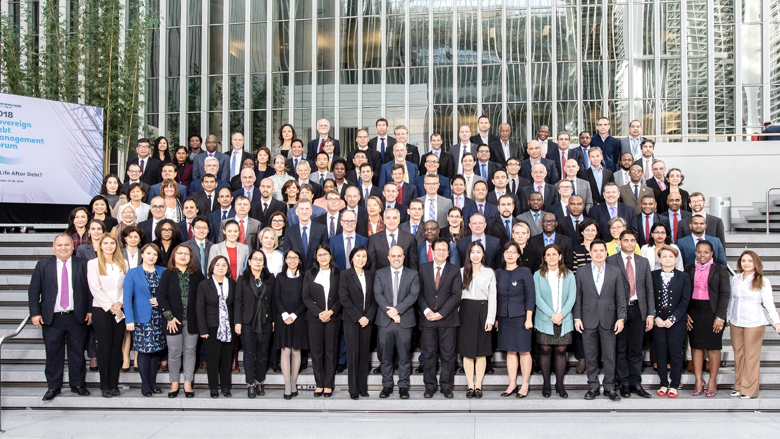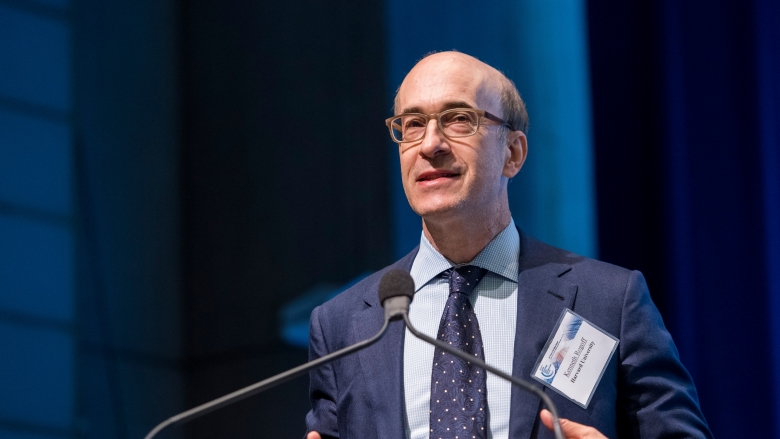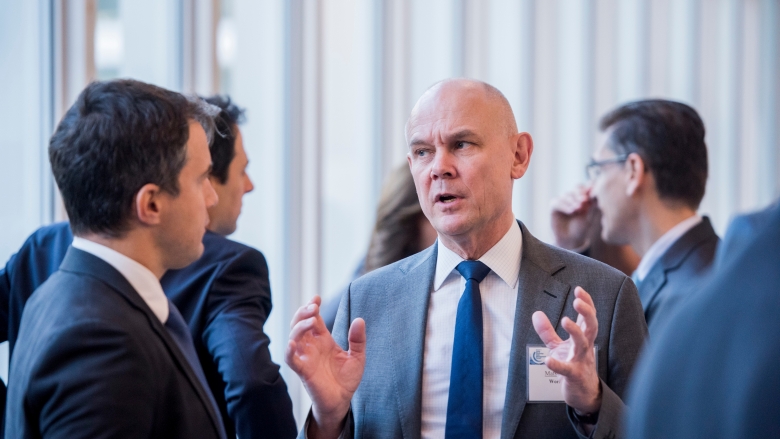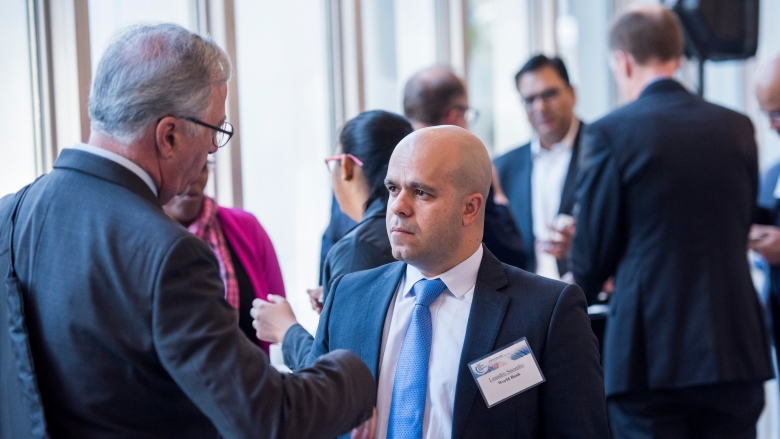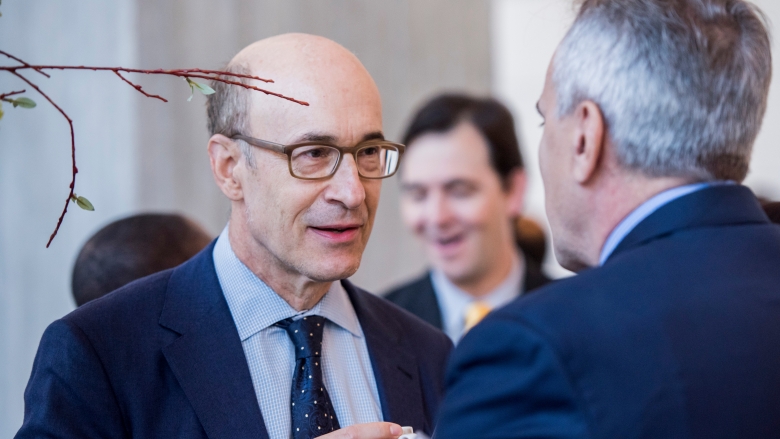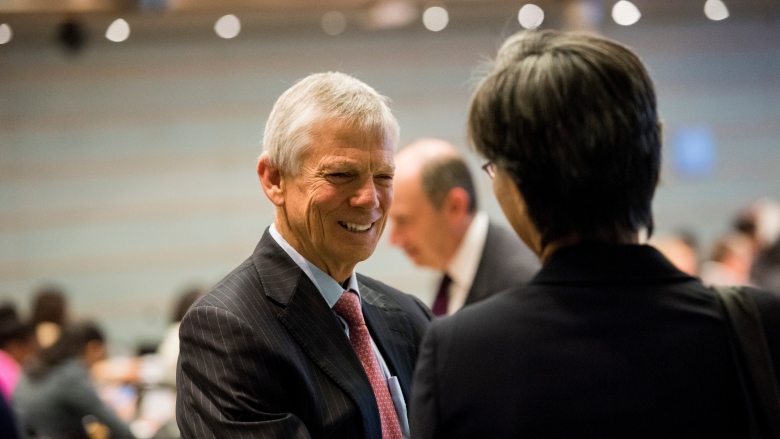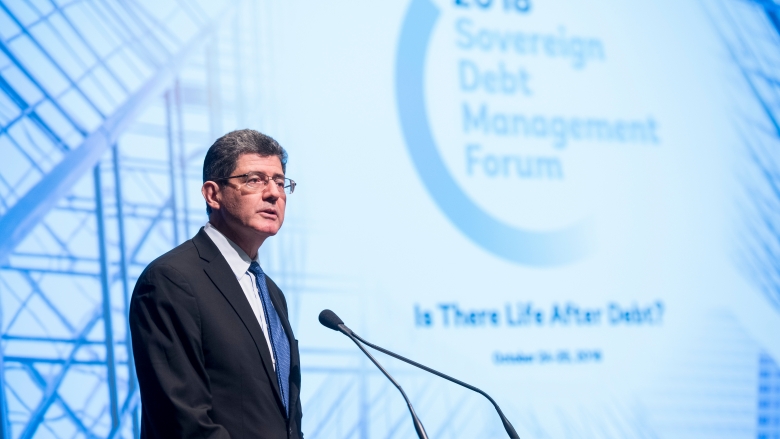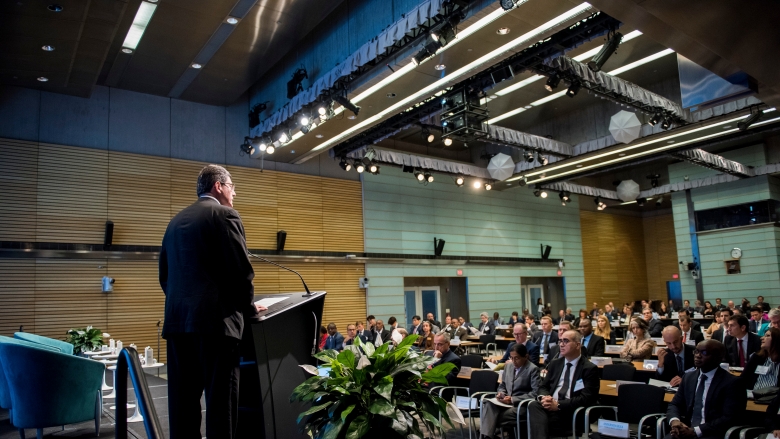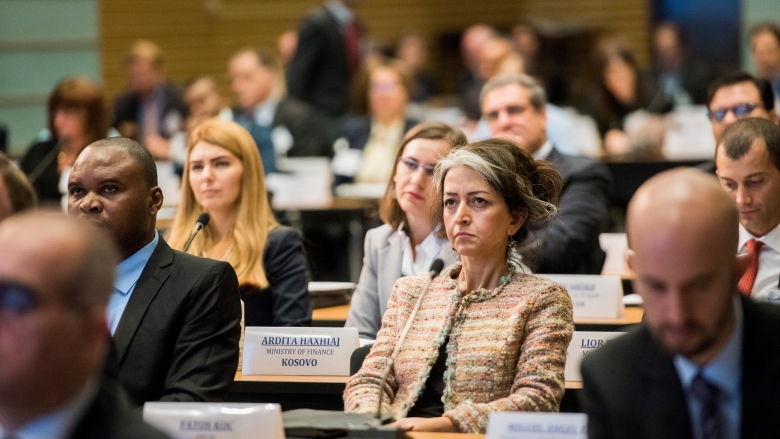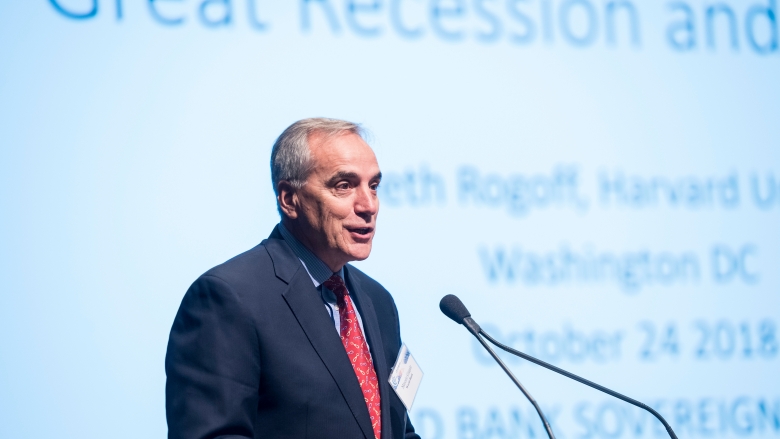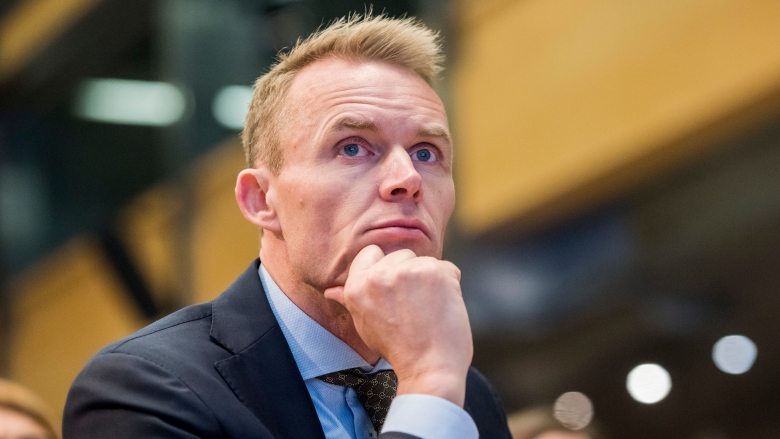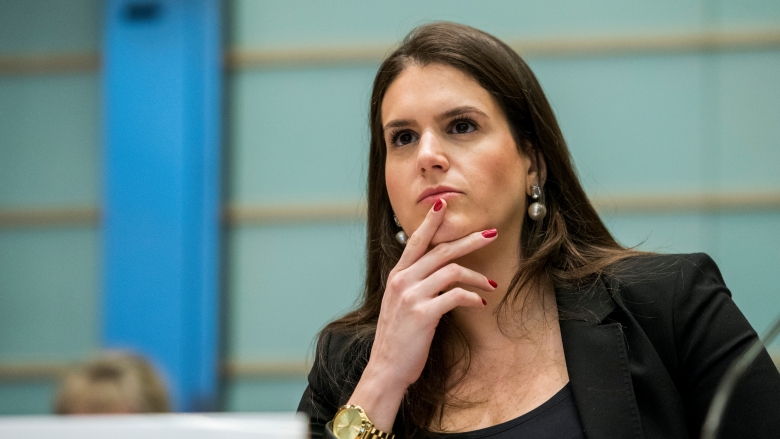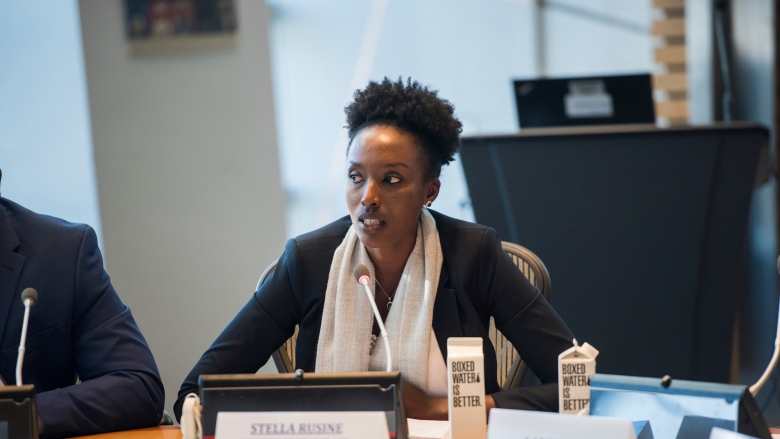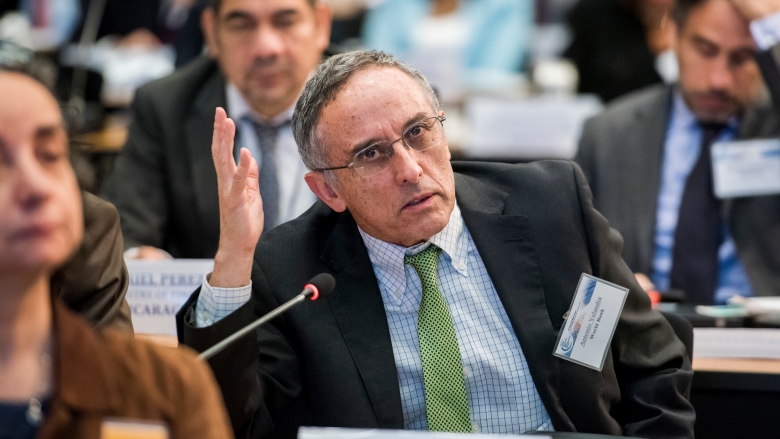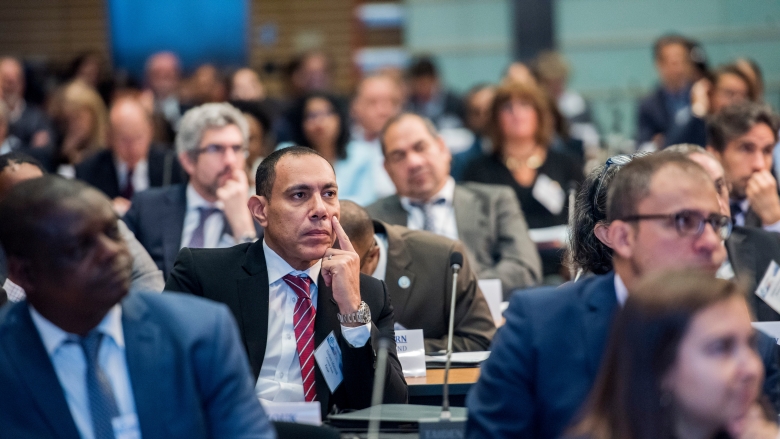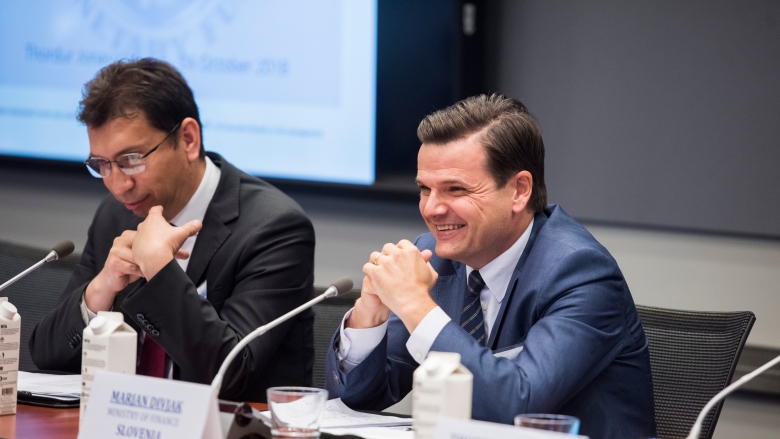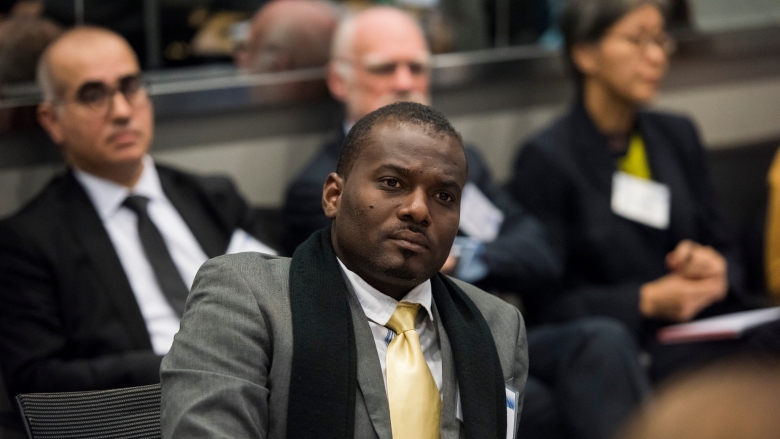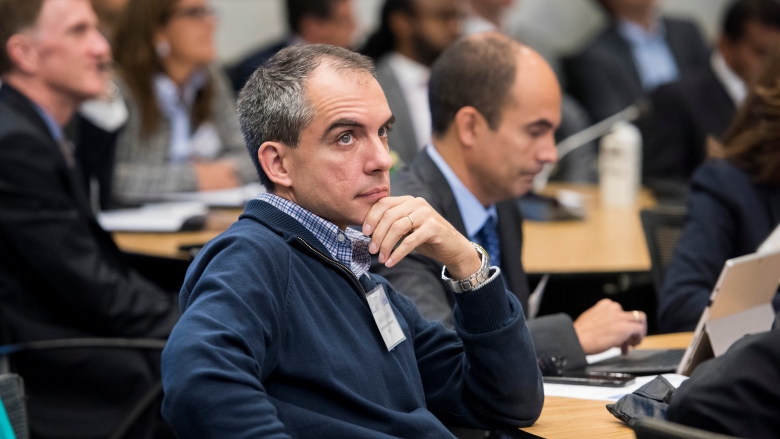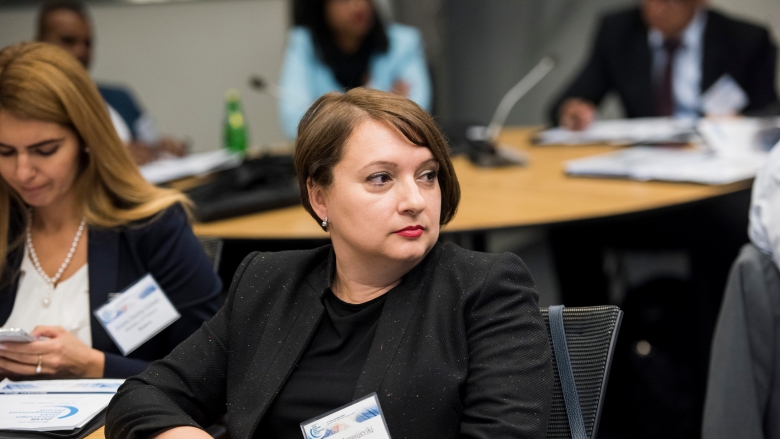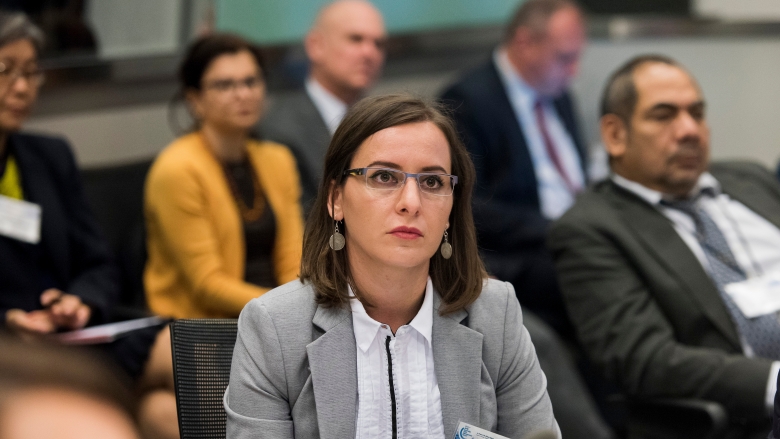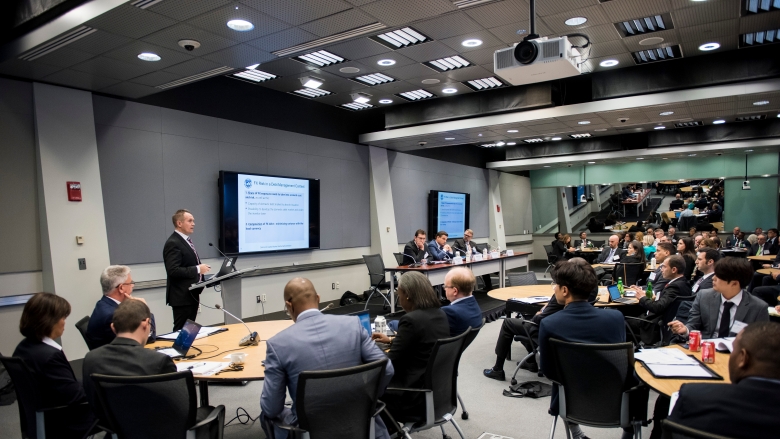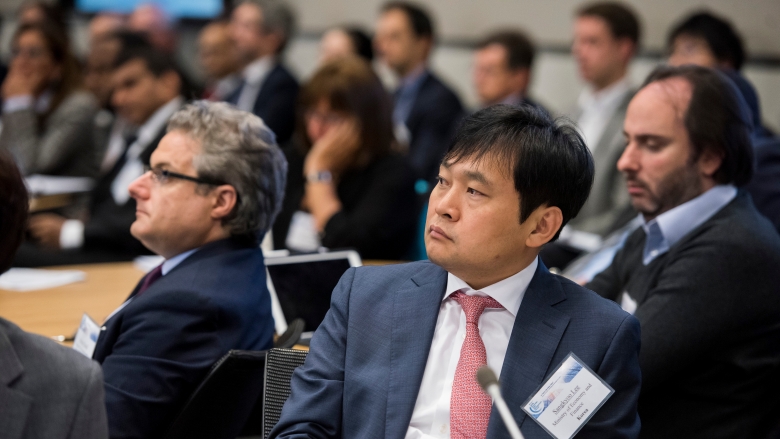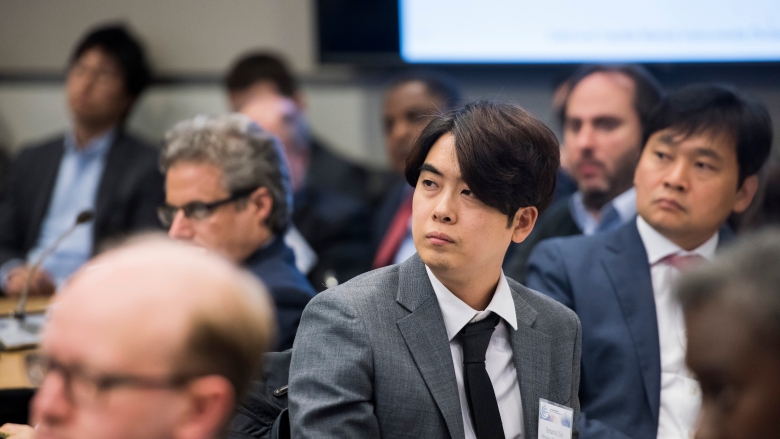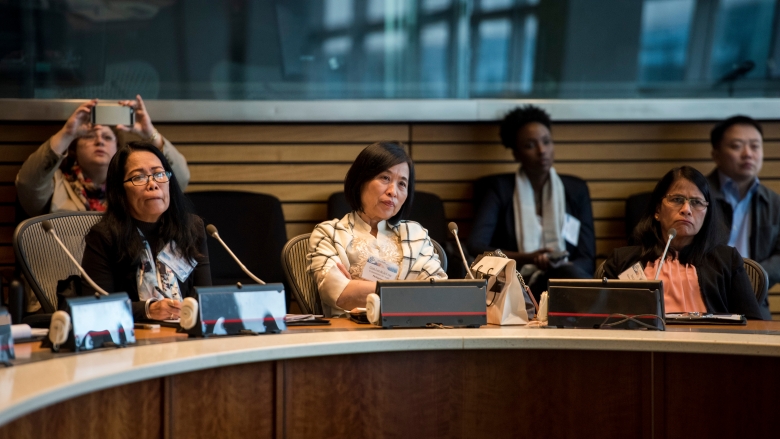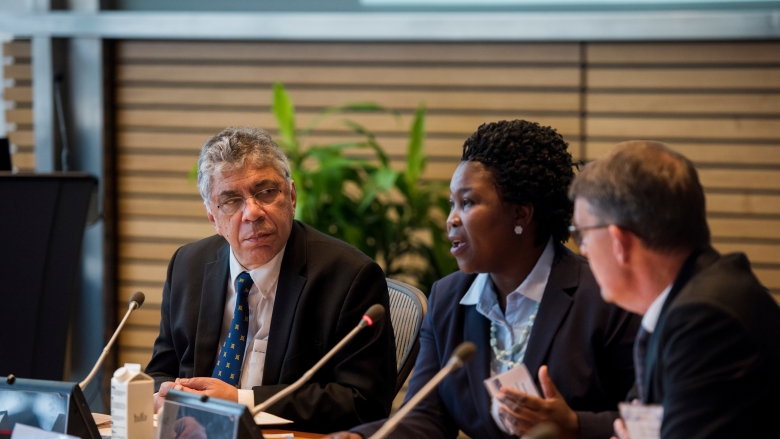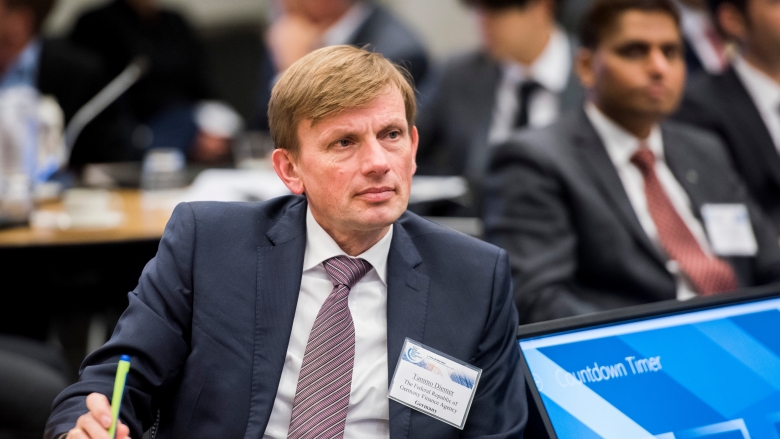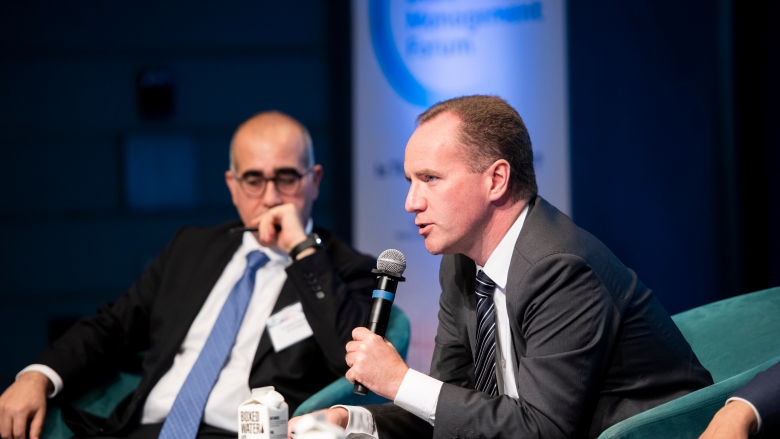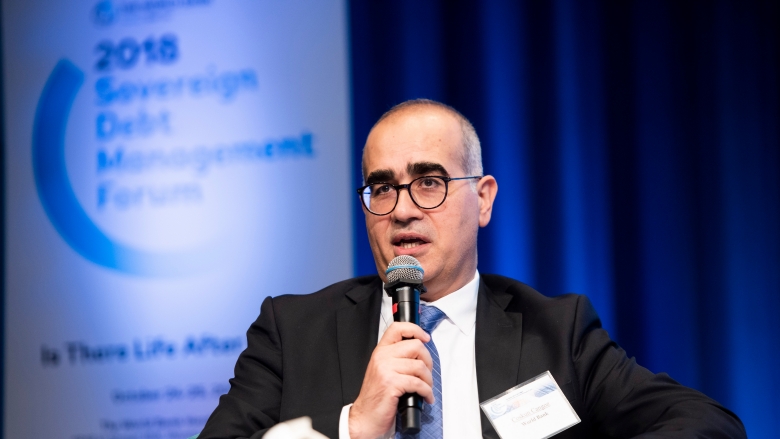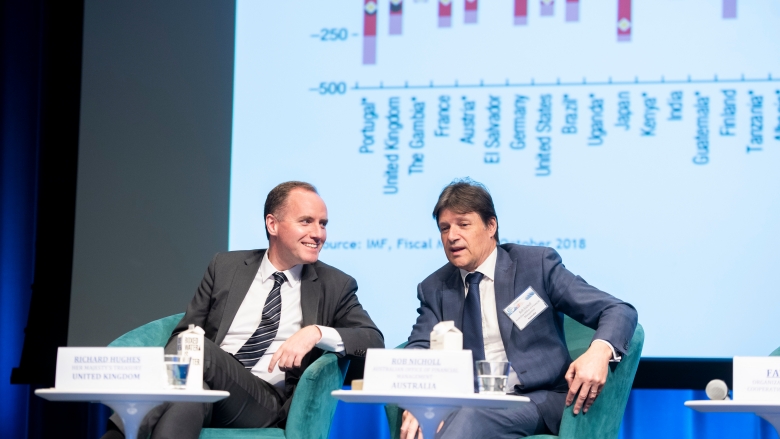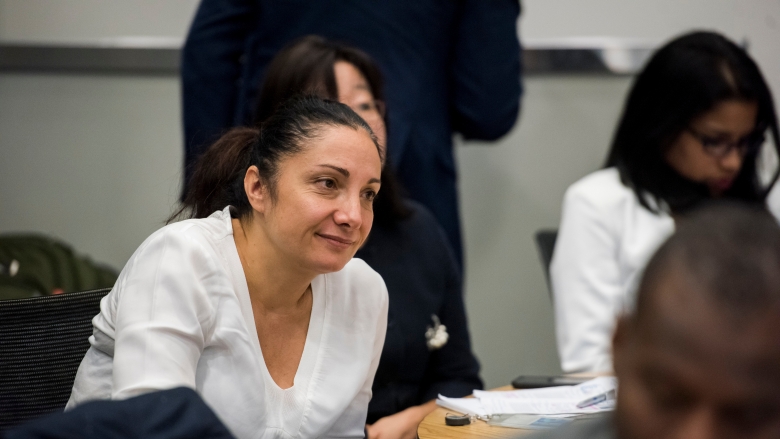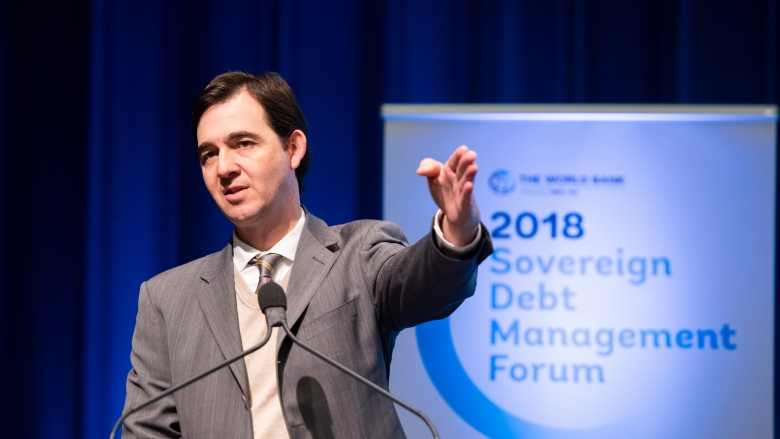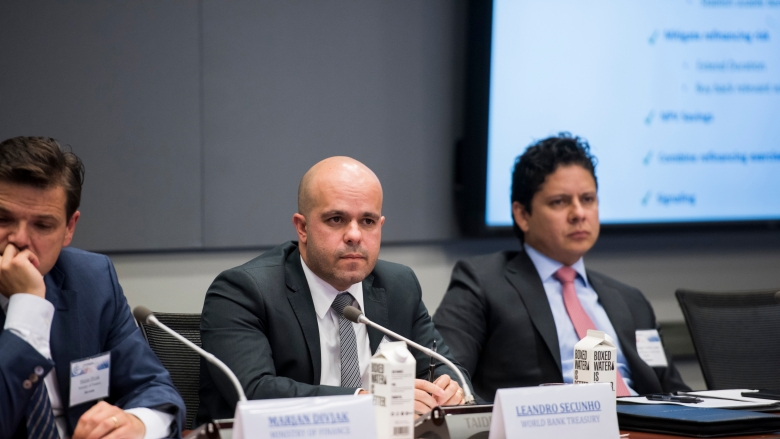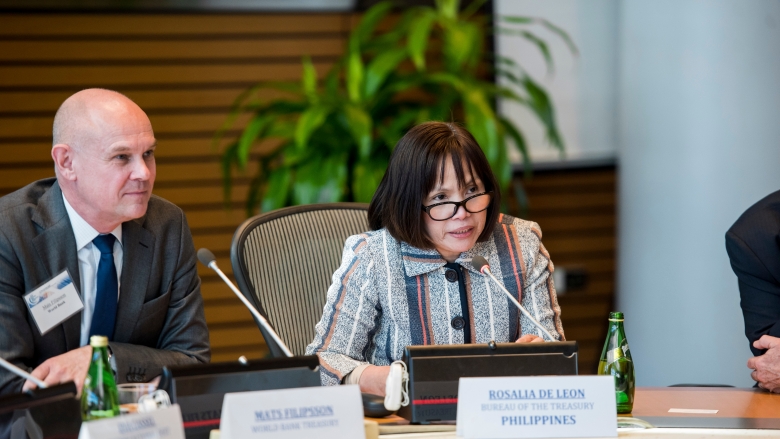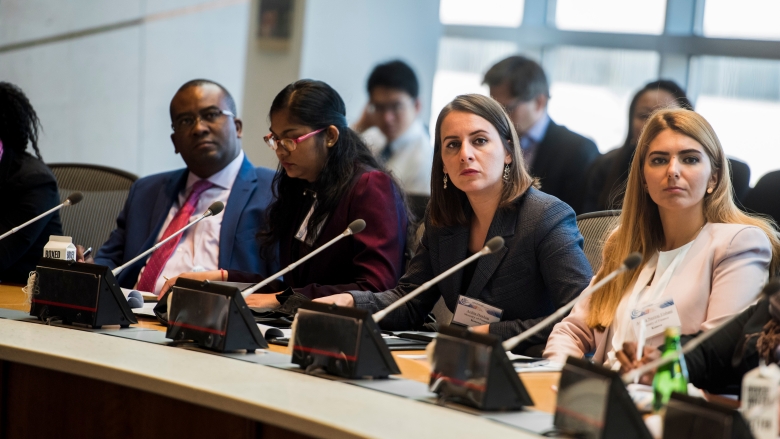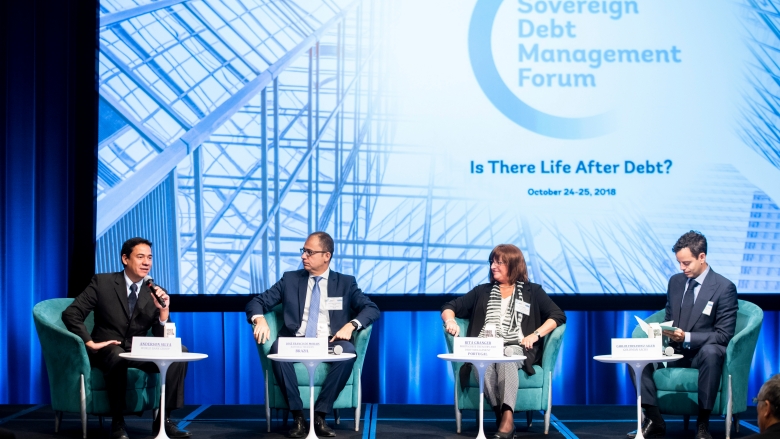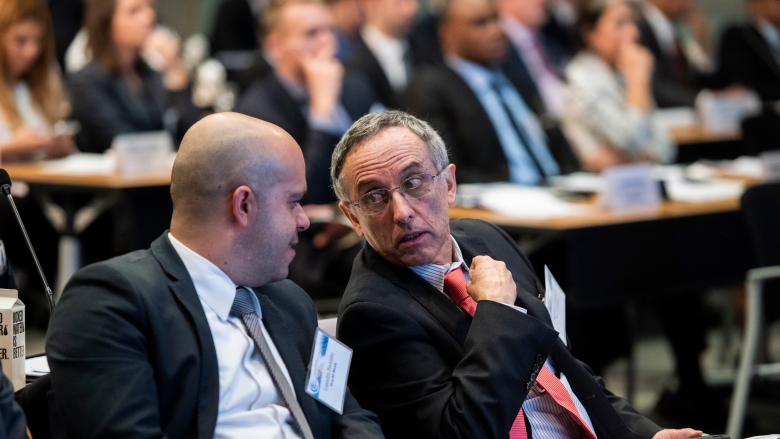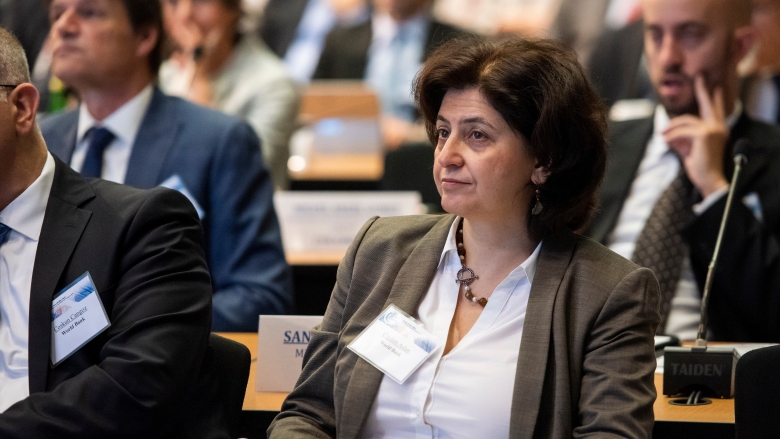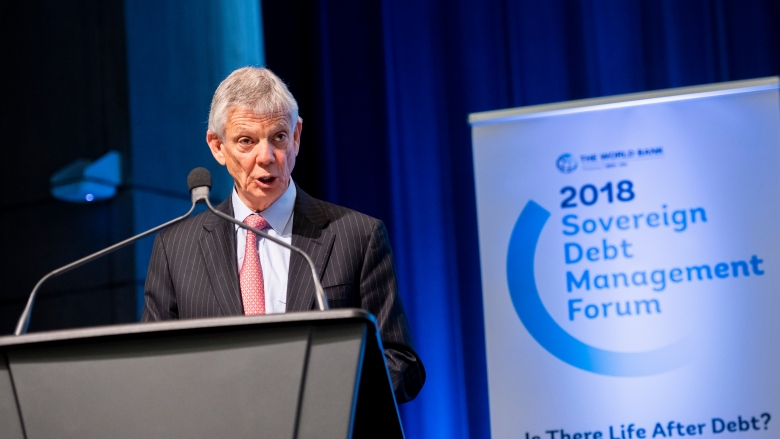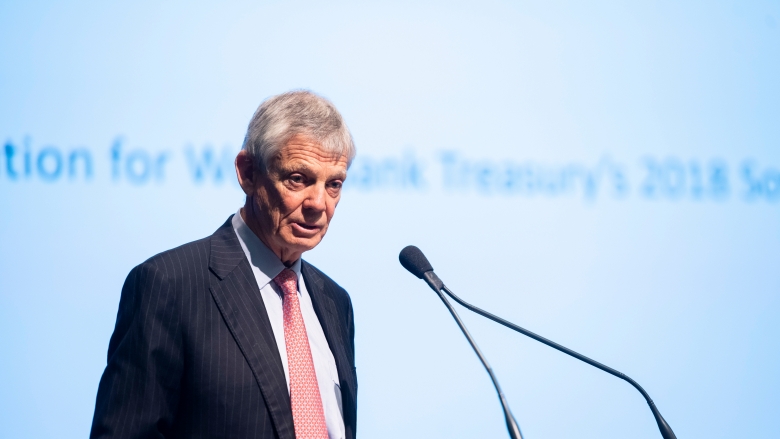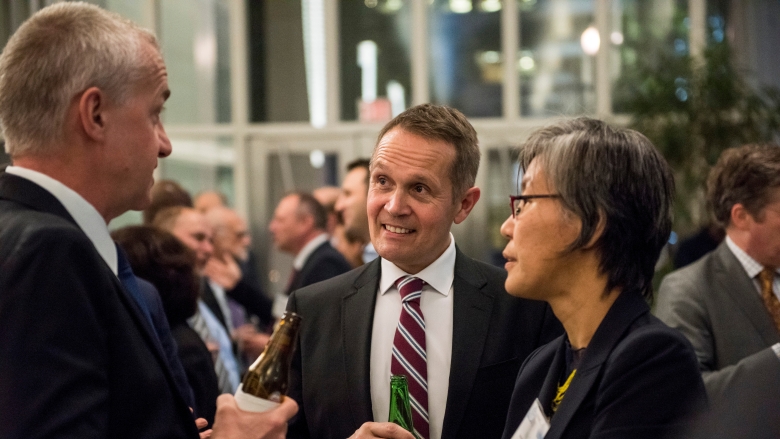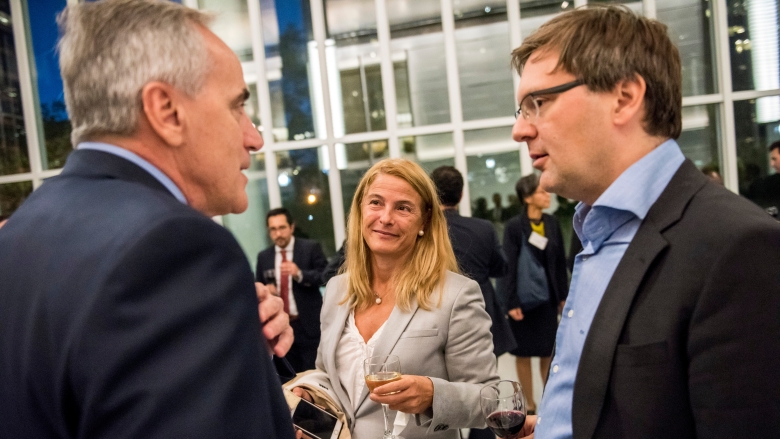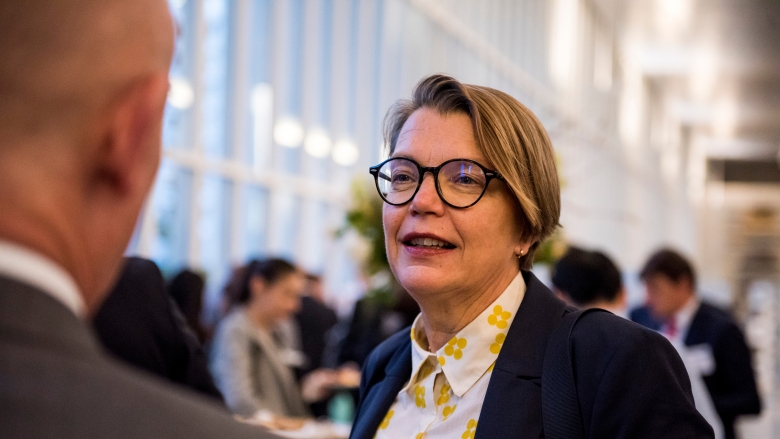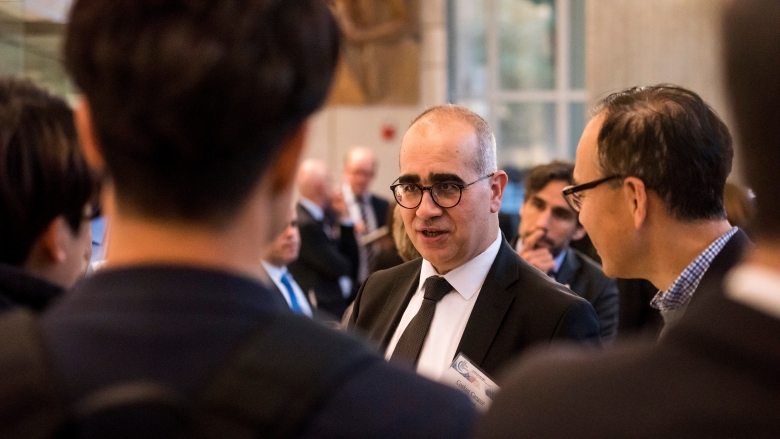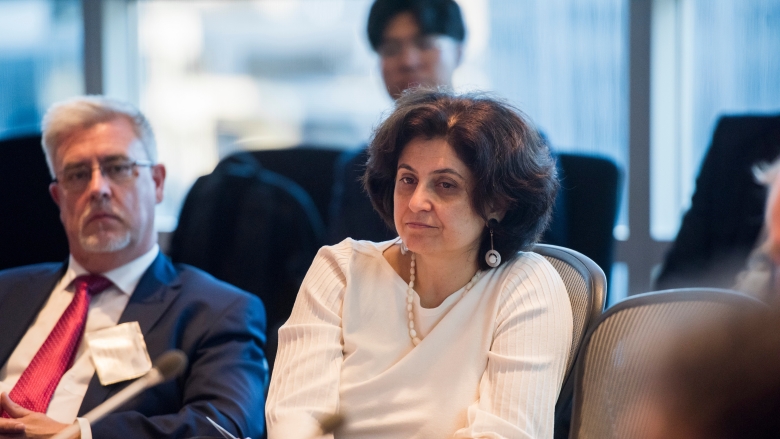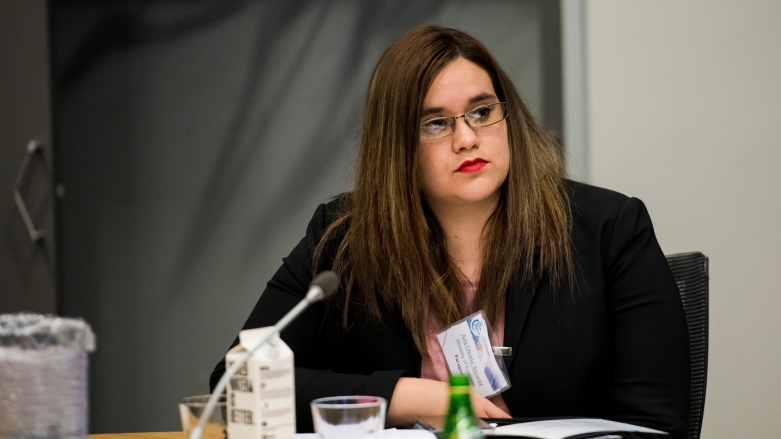Keynote speakers included Kenneth Rogoff from Harvard University, and Graeme Wheeler, former World Bank Treasurer and Former Governor of the Reserve Bank of New Zealand. Joaquim Levy, Managing Director and Chief Financial Officer of the World Bank Group, delivered the opening remarks.
In his opening remarks, Joaquim Levy, Managing Director and Chief Financial Officer of the World Bank Group, reminded the audience of the World Bank Group’s ever more critical role as an effective and reliable partner to influence development outcomes amid massive challenges in many parts of the world. He stressed that low interest rates in the wake of the global financial crises have fueled capital flows to developing countries in search for higher yields, but a normalization process is in effect now, which has made funding harder to obtain while debt, including corporate debt, has reached unprecedented levels. “If interest rates rise slowly, supported by strengthening growth, financing conditions and the capital flows to emerging market and developing economies will continue to be generally supportive. But even in this generally benign scenario, it is important that countries be prepared to build buffers to sail through the next 18 to 24 months of gradual global adjustments,” he said.
Professor Rogoff, in his key note speech, stated that the reason for low interest rates will change and we will see inflation again. Also, the historically high global debt levels, combined with a strong dollar, capital outflows from emerging markets, and monetary policy normalization leading to rising interest rates will require sound debt management skills. He also pointed out the role technology may play in the future, saying, “Massive future productivity growth from artificial intelligence should not be discounted just because effects are only beginning to be felt“.
In his key note speech, Graeme Wheeler, underscored the roles of the public debt managers which have changed since the global financial crisis. He listed continued record high global and government debt, slower global growth and possible recession in advanced economies, and more complex interaction with macro-economic policy agencies among the key challenges facing the debt managers. Stressing the need for more active public debt management, he suggested more interaction with central banks, fiscal policymakers and financial market regulators to be a part of debt management in this new era.
Throughout the three plenary and eight breakout sessions of the Forum, with more than 40 presenters, the policymakers engaged in interactive debates about the sustainability of the current elevated levels of debt, exploring topics such as major risks to the global economy, subnational debt management, inflation linked bonds, thematic bonds, debt transparency, domestic bond markets, government guarantees, liability management operations and asset and liability management.
Despite differing country contexts, participants converged around several consensus areas. In his closing remarks, Marcelo Giugale, World Bank Director for Financial Advisory and Banking, summarized the key takeaways:
-Keeping the debt portfolio free of exposure to risks such as interest rate risk, currency risk, credit risk and operational risk.
-Being prepared for a future where there will be a push for more transparency, especially around managing contingent liabilities, a need for accounting for the assets as well as the liabilities on the balance sheet, and an opportunity to better cater for the needs of the growing investor base, especially those who care about impact.
He said: “The World Bank Treasury will always be a connector, a clearing house for knowledge, a permanent forum of experiences and expertise to support public debt managers in the new era of heightened risk.”
Debt Management Advisory will hold their next Forum in 2020.

